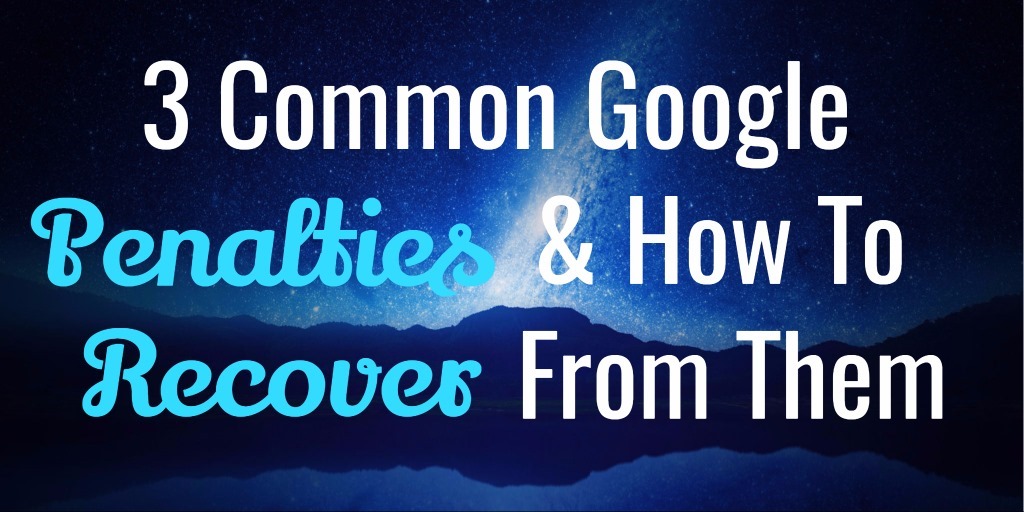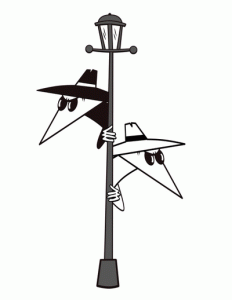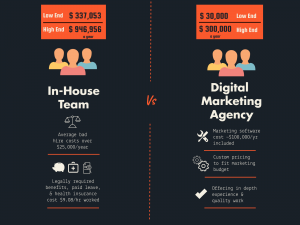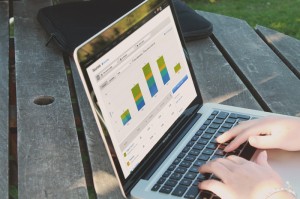
Traffic to your website is steadily rising, along with sales. Rankings are also on the rise for your target keywords. But the next day traffic takes a sudden nosedive and your site is nowhere to be seen in the search results.
What happened?
The dreaded algorithm update…
It can be incredibly devastating to witness this scenario as sales to your business likely take a major hit as a result. Such occurrences are actually much more common than you think.
Google is constantly refining its ranking algorithm to deliver better and more relevant results. In fact, it is estimated that the algorithm is updated hundreds of times a year. Engaging in any questionable tactics will likely result in a ranking penalty.
Some examples include:
- Spamming pages with irrelevant keywords
- Building links from low quality sources
- Over-optimising on-page factors
- Duplicating or using thin content
- Linking to spammy sites
Remember, Google wants only the most relevant pages in the search results. Any deliberate attempts to manipulate your rankings may work in the short term but will more than likely result in a ranking penalty.
Worried that you may have been hit by a Google penalty? Watch this video on how to run a Google penalty check using free online tools. This will help you identify and diagnose your penalty. Then continue reading this article for tips on how to recover from it.
Now that you’ve (hopefully) identified which penalty you have, we can talk about how to recover from it
Google Panda
In an attempt to rank as many pages as possible in the search results, many webmasters would publish low quality or even duplicated content. The problem is that users were often led to pages that were filled with irrelevant content or plastered with ads.
Google quickly caught on and launched the Panda update in early 2011 as a way to combat sites with poor quality content. The update also helped more authoritative sites rank higher.
What can cause a Panda penalty?
Low quality content, especially.
If your site is filled with content that provides little value or is duplicated from other sources, your site has likely been hit by the Panda update.
Shortly after the release of the update, Google has provided a list of several questions to help webmasters build a higher quality site. Here are some of them:

How to recover: The sooner you can resolve any issues surrounding your site, the better. The next steps to take if your site was hit with the Panda update is to conduct a complete content audit. This process entails examining each page and ranking them by quality.
The best, most thorough guide on Panda was written by Jennifer Slegg. It’s so good, even Google refers people to it. Go read, understand, and work on Understanding Google Panda: Definitive Algo Guide for SEOs
Google Penguin
Links carry a great deal of weight in terms of rankings.
The more you have, the better chance your site has of ranking higher for your keywords. But the relevance of those links matter as spamming your site with links from low quality sources will get your site penalised by the Penguin update. This update looks for unnatural link patterns and punishes sites that engage in questionable practices.
Here are the backlink factors that could get your site penalised:
- Link velocity: Sites typically gain links over time. It’s an indication of spam if your site has a sudden influx of links and then a sudden drop off.
- Link diversity: In a similar fashion, it is natural for sites to gain links from different sources. But if your backlink profile consists primarily of links from a single source (e.g. blog comments, directories, etc.), it is also another indication of spam.
- Anchor text: Anchor text refers to the text used in a link. An overly optimised link profile link with a single anchor text could also result in a ranking penalty. Instead, the anchor text of your links should have a natural mix of keywords.
Engaging in any manipulative backlinking practices to boost rankings (even for a single page) could negatively affect rankings for the entire site.
How to recover: If your content quality is up to par, then backlinks to your site are likely to blame.
Use tools such as Ahrefs to conduct a comprehensive audit of your links. You can also login to your Google Search Console account and download a list of links to your site. Look for any links that are clearly from spammy sources as these could be having a negative impact on your rankings.
The next step is to send emails to these webmasters requesting that the link be removed. Another alternative is to use the Disavow tool to have Google completely disregard certain links. Moving forward, focus your efforts on acquiring links from relevant sites.
Link specialist Barrie Smith explains in detail how to do this in ‘Un-link’ Building: How To Successfully Remove Penguin Links
Mobile Update
Mobile usage has seen explosive growth over the past decade thanks to smartphones and vast improvements to cellular connections.
Recognising the shift in mobile usage, Google announced that it would launch an update to make mobile-friendliness a ranking factor. Here is the statement the company made back in 2015 on the Webmaster Central blog:
“When it comes to search on mobile devices, users should get the most relevant and timely results, no matter if the information lives on mobile-friendly web pages or apps. As more people use mobile devices to access the internet, our algorithms have to adapt to these usage patterns.”
The mobile update has since gone live. (Read Analyzing Google’s Latest Mobile Friendly Update to see its true impact).
If your site is already optimised for mobile devices, then your site will likely not be negatively impacted by the update. But if your site does not meet the requirements, then rankings will be lower in the mobile search results.
How to recover: The first thing to do is use the Mobile-Friendly Test from Google to determine if your site is optimised for mobile devices.
If not, there are different approaches you can take. Google’s recommended configuration is responsive design which is based on a grid layout that dynamically adjusts to fit all screen resolutions. It also offer numerous advantages from an SEO standpoint. If your site is not yet mobile friendly, your site is likely losing traffic in the mobile search results. Once your site meets all the requirements, it will be re-crawled and indexed.
And don’t forget; Google’s mobile test isn’t 100%. Back up their conclusion by using the 5 Tools To Test If Your Website Is Really Mobile Friendly.
Conclusion
Getting hit with an algorithm penalty can cause traffic to your site to nosedive.
Google Panda and Penguin are perhaps the most common penalties which exist to punish sites engaged in questionable tactics from publishing spammy content to building low quality links. Not having a mobile friendly site could also result in a ranking penalty.
The good news is that it is possible to recover from these penalties by following the steps outlined here. Note that it can take some time to regain any previously lost rankings. Moving forward, focus your efforts entirely on publishing quality content and building links from relevant sources to sustain your rankings.
* Adapted lead image: Public Domain, pixabay.com via getstencil.com
3 Common Google Penalties & How to Recover From Them
The post 3 Common Google Penalties & How to Recover From Them appeared first on Search Engine People Blog.
Search Engine People Blog(142)






